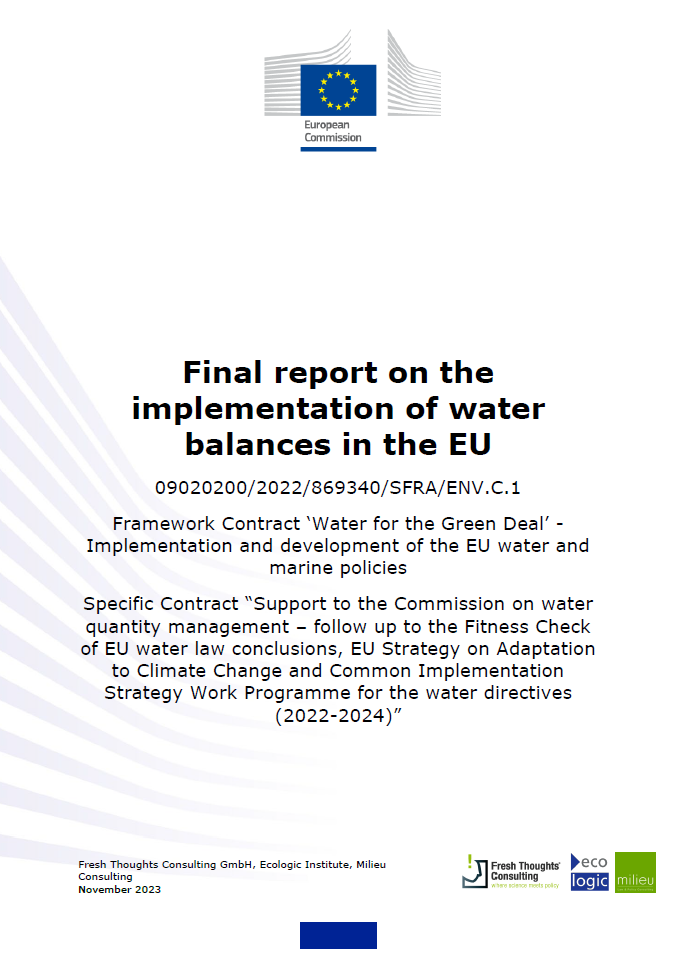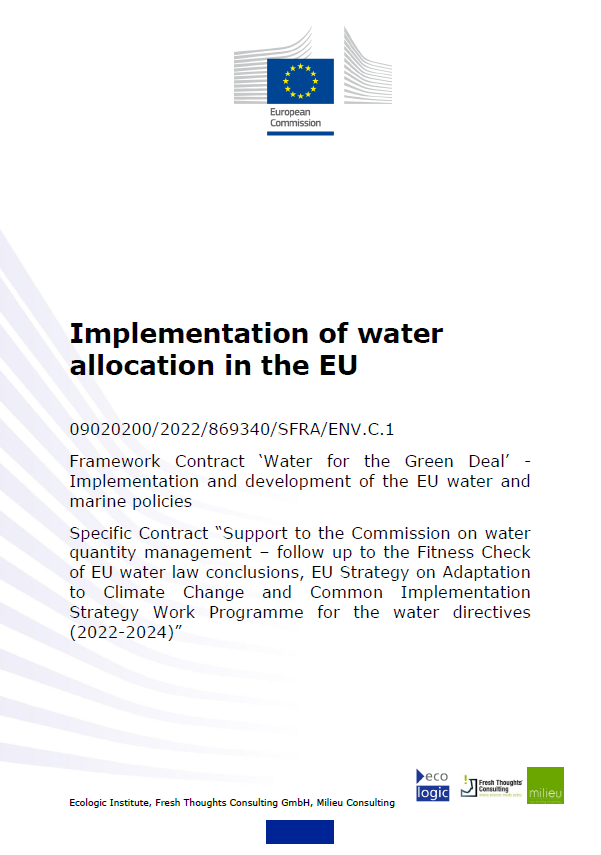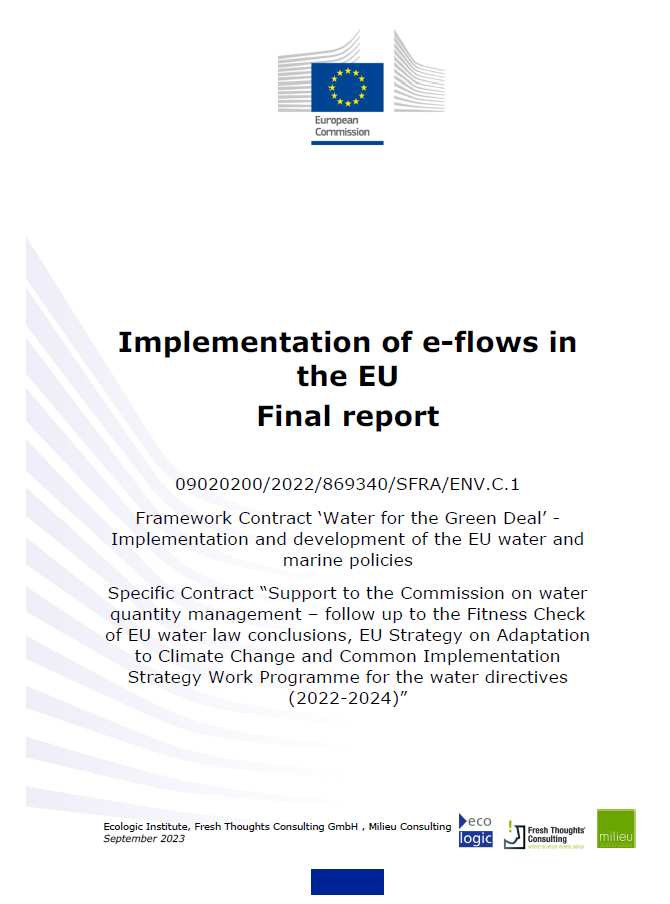Implementation of Water Balances in the EU
- Publication
- Citation
Schmidt, Kampa & Rouillard (2023): Implementation of water balances in the EU. Final Report. Developed under the Framework Contract ‘Water for the Green Deal’ - Implementation and development of the EU water and marine policies (09020200/2022/869340/SFRA/ENV.C.1). Specific Contract "Support to the Commission on water quantity management – follow up to the Fitness Check of EU water law conclusions, EU Strategy on Adaptation to Climate Change and Common Implementation Strategy Work Programme for the water directives (2022-2024)"
A water balance is – in simplified terms – a calculation of the water quantity available during a specific time period (such as a month or a year) in a river basin, considering water abstraction, use and consumption. This calculation can be used to maintain sufficient water levels in water bodies, to ensure their good status/potential, to allocate water to the different users, to avoid overexploitation of natural water resources, and to build resilience against climate change.
In some EU Member States, water balances have been in place for a long time, whilst for others this is a new field of water management. To support their development and use, an EU guidance document was adopted in 2015; however, there are still major challenges for their implementation. The analysis for this report has grouped these challenges (based on Member State self-assessments as well) in four clusters:
- Data availability: Though most EU Member States implement water balances, usually at the river basin level, water quantity measurements that can help determine consumptive uses across sectors are often either not available or not undertaken systematically.
- Data reliability remains a challenge for many Member States, in particular regarding the metering or estimation of water use and consumption, especially in irrigation agriculture. A key gap is the estimation of illegal water uses, which are very significant in some locations but are usually not considered in water balances. Additionally, avoiding double accounting for reused water and groundwater-surface water interactions is a challenge for several Member States.
- Usability of water balances for river basin management is a further issue. Often the water balances are developed only by water managers without involving relevant researchers and other interested parties and do not necessarily reflect indicators such as sustainability thresholds which can directly be incorporated into the RBMPs and management decisions.
- Harmonization of water balances across borders remains a major challenge, often due to a lack of mutually accepted data, common definitions as well as procedures for preparing water balances.
This report presents, for many (but not all) of these challenges, illustrative examples that have been collected from volunteering Member States. These examples could guide others that are still in the process of setting up water balances or struggling with implementation challenges.
Water scarcity and droughts have struck many regions in Europe over the past years, illustrating the need for urgent and transformative action to adapt to climate change – and for the implementation and use of effective water balances. In consequence, the following recommendations are made for improving water balances as the knowledge basis for water allocation decision-making:
- Calculations of water use (abstraction, consumption, return) should move from estimations to real data (metering), especially for large consumers.
- Illegal water use should be estimated and accounted for in calculations of the water balance, especially for irrigation agriculture.
- Transboundary cooperation should be improved, by exploring opportunities to share monitoring, databases, and modelling tools as well as implementing joint assessments of the water balance results.
- Water balances should be updated regularly to reflect changes due to climate change, such as the projected increase in variability of temperatures and precipitation.
- In areas with significant water scarcity, impacts on water quality and the effects of water prices should be explored in water balances to improve the understanding of the system, its values, and its risks.








